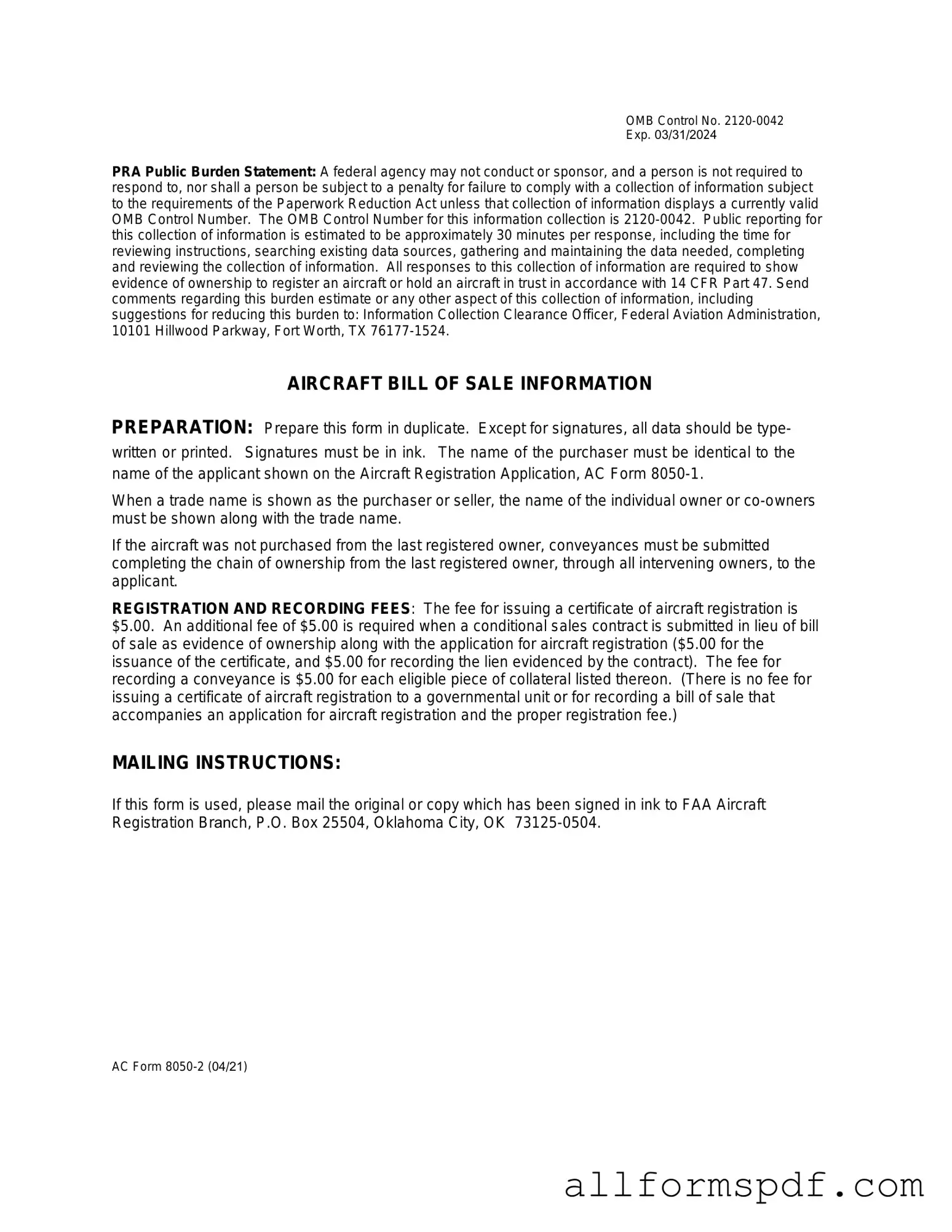Completing the Aircraft Bill of Sale AC 8050-2 form requires attention to detail. One common mistake is failing to provide complete information about the aircraft. This includes the make, model, and serial number. Incomplete information can lead to delays in processing and potential legal issues.
Another frequent error is neglecting to include both the buyer's and seller's signatures. All parties involved must sign the document for it to be valid. Omitting a signature can invalidate the sale and create complications in ownership transfer.
People often overlook the importance of accurate dates. The date of sale must be clearly indicated. Errors in the date can create confusion regarding ownership and may affect warranty claims or other legal matters.
Additionally, some individuals forget to provide the correct purchase price. The form requires the sale price to be stated clearly. An incorrect price can lead to discrepancies in tax assessments and future transactions.
Another mistake is not including the correct type of payment. Whether the transaction is a cash sale, financed, or involves trade-ins, this must be clearly stated. Miscommunication about payment types can result in disputes later on.
People sometimes fail to check for any additional documentation requirements. Depending on the jurisdiction, certain documents may need to accompany the bill of sale. Not providing these can delay registration and ownership transfer.
Lastly, individuals may not keep a copy of the completed form for their records. Retaining a copy is essential for future reference and can help resolve any disputes that may arise. Without a copy, proving ownership or the terms of the sale can become challenging.
